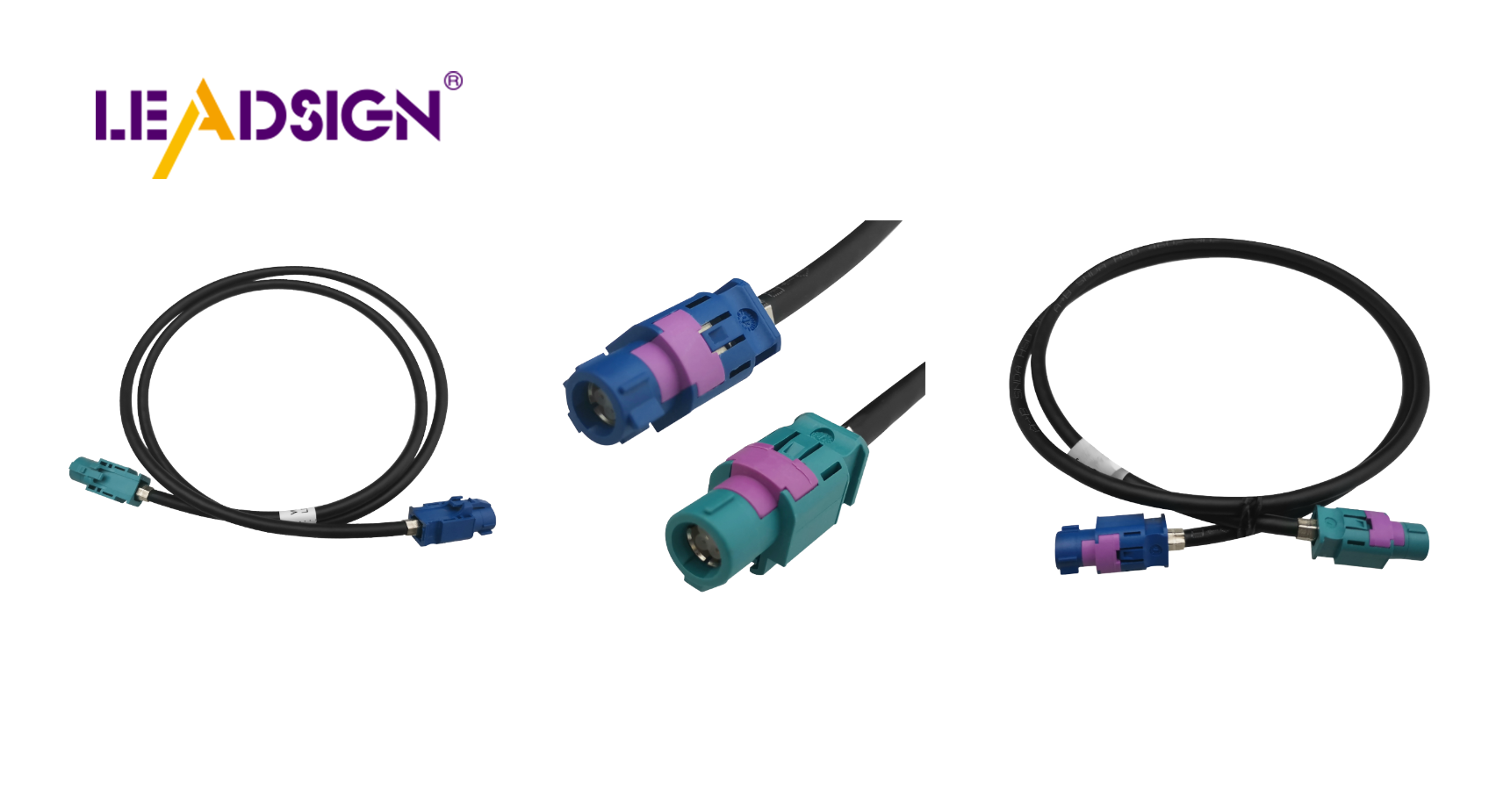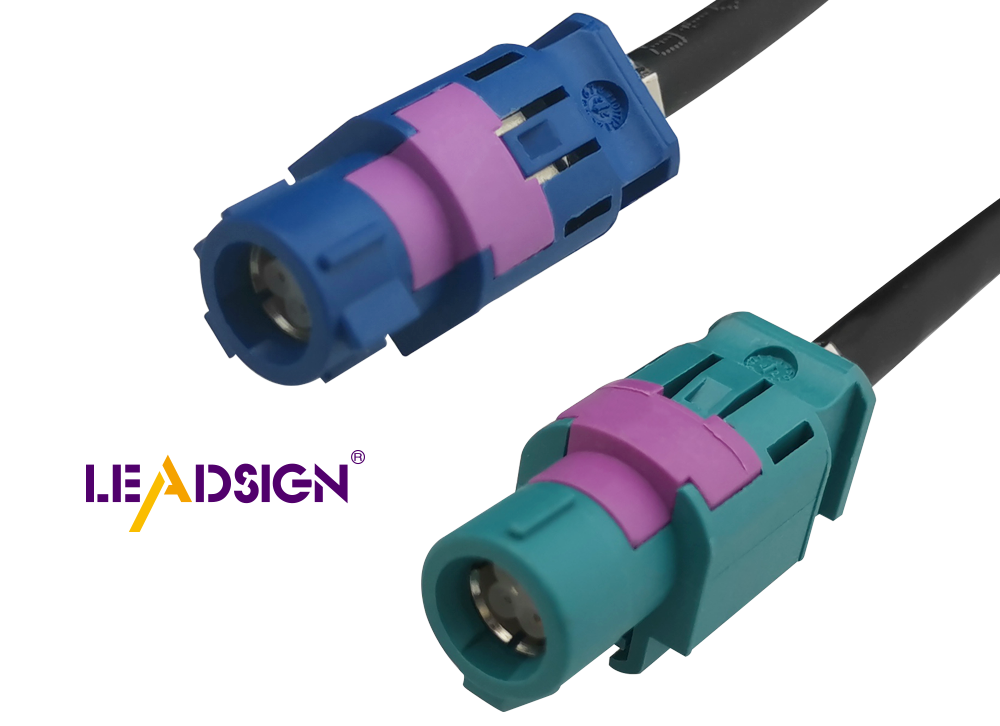A Guide to Types of Wire Connectors Automotive

Automotive electrical connectors types are crucial in car systems. They facilitate communication between various components. The automotive wiring market was valued at USD 49.73 billion in 2023 and is projected to reach USD 81.94 billion by 2032, showing a growth rate of 5.8%. These connectors play a vital role in connecting diverse systems within a vehicle. Selecting the appropriate automotive electrical connectors types is essential for ensuring safety and optimal performance. Understanding the various connector types available is key to making informed decisions for the efficient operation of vehicles.
Overview of Wire Connectors
Definition and Purpose
What are wire connectors?
Wire connectors are important parts in car systems. They connect wires to keep them stable and safe. These connectors help electricity move between different car parts, making sure everything works right. By linking wires well, they stop problems that could cause things to break.
Why are they essential in automotive systems?
In cars, wire connectors are key for safety and working well. They keep connections strong, even with bumps or heat changes. Good connectors lower the chance of electric problems that might cause a car to stop or be unsafe. Using the right ones helps cars work better and last longer without needing fixes often.
General Characteristics
Material composition
The stuff used in wire connectors affects how they work and last. Copper and aluminum are often used in electrical things. Copper is great because it lets electricity flow well and doesn't rust easily, so it's good for grounding power. Aluminum is lighter and cheaper but doesn't conduct as well; it's good when weight matters more. The choice depends on what you need like power handling or cost.
Durability and resistance to environmental factors
Wire connectors need to handle tough conditions to last long. Good ones have strong covers that keep out water and rust. This stops electric issues that can be dangerous. Also, these connectors stay strong in hot or cold places, keeping electricity flowing right. Picking durable ones helps cars run well everywhere, needing less fixing and lasting longer.
Types of Wire Connectors

Butt Connectors
What are they and how are they used?
Butt connectors join two wires together. They look like small tubes. You need to squeeze them tight to hold the wires. In cars, they help make wires longer or fix broken ones. They are easy to use for quick repairs.
Good and bad points
Good things:
Easy to use: Butt connectors don't need many tools.
Fit different wires: They work with many wire sizes.
Cheap option: These connectors cost less for fixing things.
Bad things:
Not very strong: They might not last in tough places.
Weak links possible: If squeezed wrong, connections can be loose.
Ring and Spade Terminals
What are they and how are they used?
Ring and spade terminals connect wires to bolts or posts. The ring type has a round end that goes over a bolt. The spade type has a forked end for easy on-off. They're used in cars where strong links matter, like battery spots.
Good and bad points
Good things:
Strong link: These terminals make solid connections.
Simple setup: Easy to attach or remove for fixes.
Many sizes available: Fit different bolts and wire sizes.
Bad things:
Not flexible: Hard to move once set up.
Might rust: Can rust if not sealed well, especially when wet.
Quick Disconnects
What are they and how are they used?
Quick disconnects let you connect or disconnect fast. They have male and female parts that snap together easily. In cars, they're great for parts you often change, like sensors.
Good and bad points
Good things:
Fast use: Quick disconnects save time during setup.
Use again: Can be reused without losing quality.
Work with many types: Fit lots of car connector types.
Bad things:
Might come apart: Can loosen if not snapped right.
Low power handling: Not good for high power needs.
Knowing about these wire connectors helps keep cars safe and working well. Each kind has its own pros and cons, so picking the best wire connectors is important for each job.
Other Types of Automotive Electrical Connectors
Pigtail Connectors
Pigtail connectors are important in car systems. They join wires to parts, making sure connections are strong and safe. These connectors have a short wire attached, which helps link other wires easily. In car connector types, pigtail connectors are used when direct links aren't possible.
Good things:
Bendy: Pigtail connectors help connect wires to hard-to-reach parts.
Simple Use: They make connecting wires easy, even in tight spots.
Useful: Good for many car jobs like lights and sensors.
Bad things:
Loose Links Possible: If not done right, they might cause loose links.
Short Wire: The short wire may not fit all uses.
Crimp Connectors
Crimp connectors are well-known in car wiring types. They make a strong link by squeezing the connector onto the wire. This way makes a tough bond that handles shaking and weather changes.
Good things:
Tough Link: Crimp connectors give a strong connection for rough conditions.
Lasting: They fight rust and stay good over time.
Cheap Option: Crimp connectors save money for many car uses.
Bad things:
Needs Tools: You need special tools to set them up, which might be hard to find.
Stuck Once Done: After crimping, you can't easily change or take them off.
"Using the right car connectors keeps cars working well and safely.
Practical Uses and Examples
Common Car Uses
Wire Bundles
Wire bundles are like the main path for a car's electric system. They gather many wires together to keep them neat and working well in the car. Automotive electrical connectors types are very important here. They make sure parts connect safely. For example, pigtail connectors help link wires to hard-to-reach spots, making setup easy and flexible. Their ability to easily add another wire is very helpful for special needs.
Battery Links
Battery links need strong connectors to give steady power. Ring and spade terminals are often used because they hold tight connections well. These automotive electrical connectors types keep the battery linked securely with the car's electric system. They last long without rusting, even in tough weather.
Manufacturer Examples
LEADSIGN HSD Connector
The LEADSIGN HSD Connector shows advanced connector types for fast data moving in cars. It's great for electronics like LVDS cameras and USBs. It has strong locks, crimp links, and holds cables tight. These features make it perfect for digital systems and balanced networks.
"The HSD interconnect system was made for car electronics that send high-speed data, like LVDS cameras or USBs."
Other Key Makers
Many companies make good automotive connector types that boost car reliability and work well. These connectors help move power smoothly between different car parts. Bimetallic connectors, known for not rusting and being flexible, are popular with makers. They ensure safe setups by thinking about material, size, and cable type. Picking the right connector is key for keeping a car's electric system safe and effective.
Common Questions and Issues
Frequently Asked Questions
How to pick the right connector?
Choosing the right car connector is important for keeping your car working well. Connector Experts say connectors link different electric parts in a car. To pick the best one, think about these:
Compatibility: Make sure the connector fits the wire size and type.
Environment: Pick connectors that handle heat and wetness in cars.
Application: Know what it's for, like fast data or power links.
How to make a safe connection?
A good connection stops electric problems and keeps things safe. Try these tips:
Proper Crimping: Use the right tools to crimp wires tightly.
Inspect Regularly: Look for wear or rust on connections often.
Use Sealed Connectors: In wet spots, sealed ones keep water out.
Fixing Common Problems
Finding bad connections
Bad connections can mess up a car's electric system. Signs of trouble are:
Intermittent Power: Things turn on and off by themselves.
Corrosion: Rust or color changes on connectors.
Loose Wires: Wires come off connectors easily.
Fixes for common issues
To fix connector problems, do this:
Cleaning: Clean rust with a brush or cleaner spray.
Tightening: Make sure all wires are tight and secure.
Replacement: Swap broken connectors with new ones to fix them.
"Car connectors link different electric systems in your vehicle. They help move power and signals smoothly so your car works well." - Connector Experts
Knowing these helps keep your car's electricity working safely and well.
Picking the right wire connectors is very important for cars. They help power and signals move smoothly, keeping things safe and working well. Car experts say good connectors link different electric parts in a car. Choosing strong and matching connectors makes cars work better and last longer. Using the wrong ones can cause fires. So, it's key to pick good and fitting connectors to keep cars safe and running their best.
See Also
A Comprehensive Ford Fakra Connector Guide
Essential HSD Connector Knowledge for Automotive Sector
Significance of FAKRA Connectors in Automotive Uses

